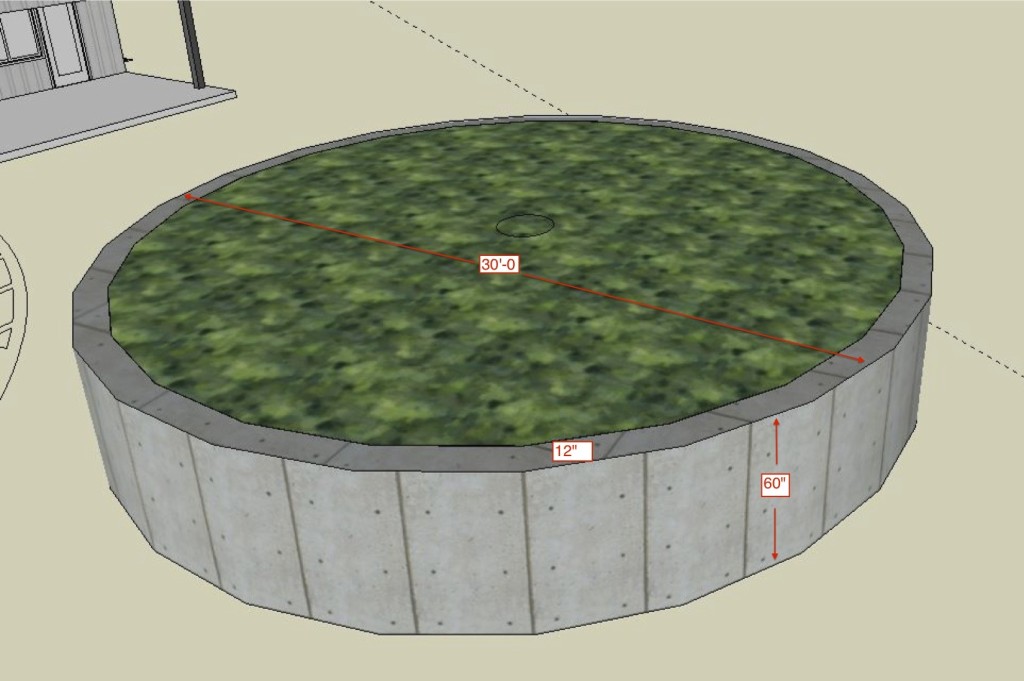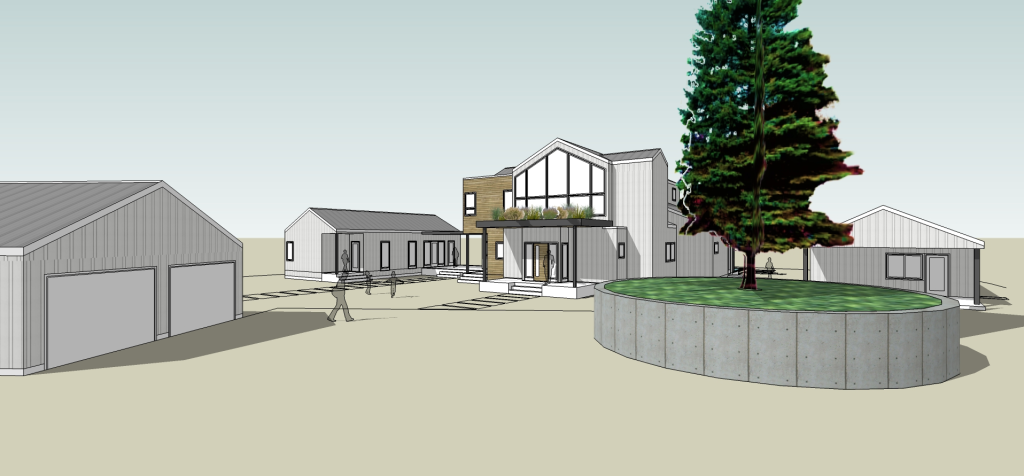I just can’t type “real-life” without quotes because I’m yet to resolve what “real-life” means in a math class. But for this post it means – “Math someone needed to do at their job”. And in this post that someone is my wife – who much to her distain and my joy – does a lot of geometry as a project manager at a construction firm.
So here’s what we need to know: How much cement is needed to make that border? We need the answer in cubic yards because you buy cement in cubic yards.
The image below provides some of the context for the problem – The cement border is being used to circle an existing tree.
I was actually surprised how open the middle was on this problem. Yet students used two main strategies. The first was the standard subtract the areas and multiply by the height, or they subtracted the volumes of both cylinders directly. The second was the find the perimeter, think of the wall as a rectangle (dimensions of 2*pi*r X 1′), find the area of that rectangle and then multiply by the height.
One student using the second strategy used a radius of 14ft and got a solution of 16.2 cubic yards. He told me he knew the answer would be a little too small because of only using the inner radius. Another students used 14.5 and got the same solution as the area subtracting syndicate.
Converting from cubic feet to cubic yards is a great time to practice your perplexed I wonder why you divide by 27? face.
By the way the wall ended up costing around $35000. I can’t believe how long I would have to work to put a wall around a tree 🙁
Cheers!
– B


